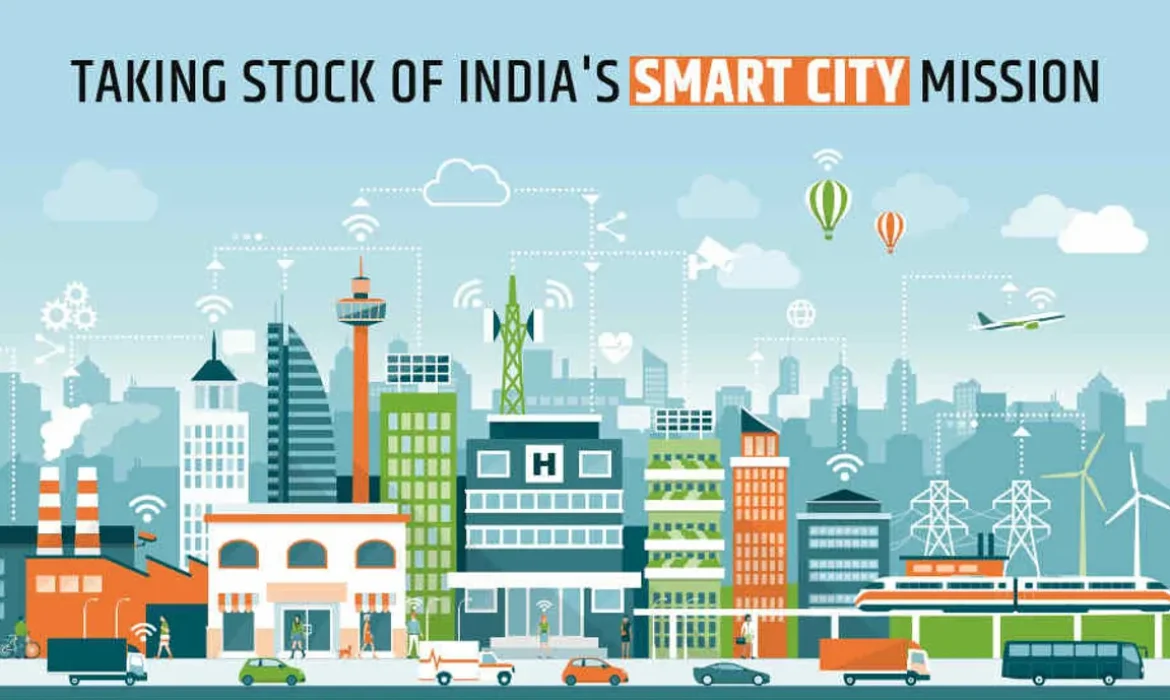Smart City Mission in India 🇮🇳: Everything You Need to Know About
Prime Minister Narendra Modi introduced the 100 Smart Cities Mission in India on June 25, 2015. The Smart Cities Mission is an urban redevelopment and restoration project started by the Indian government with the goal of creating smart, green cities. The goal of the Smart City project is to provide all facets of the community with a higher standard of living and environment. This government of India initiative aims to raise living standards in 100 cities and towns. Let’s examine in depth the smart city mission in India, including its goals, difficulties, list of cities, and other details.
Also Read:- 6 suggestions for creating effective email landing pages
Attributes of India’s Smart Cities Mission
The main goal of the Smart Cities Mission is to increase economic growth and quality of lifestyle. Let’s go over each element’s planning and impending execution in depth.
- It encourages the appropriate use of diverse lands. It will be easier for different states to use land for different things and modify it to suit their needs.
- Another important objective of the Smart City initiatives is to give everyone housing options. The foundation for attaining smart development objectives is housing. As a result, more housing development projects will be launched to accommodate lower-income populations.
- The goal is to establish a hospitable, active, and secure atmosphere. The current emphasis is on developing pedestrian communities, easing traffic, ensuring security, lowering air pollution, and boosting the regional economy. To prevent traffic jams and reduce accidents, an all-way pedestrian crossing is being constructed, along with an interconnected traffic control system.
- Other important objectives of the mission include creating leisure areas like gardens, parks, open fitness centres, outdoor spaces, and more. This will aid in encouraging Indian citizens to lead healthy lifestyles.
- More internet services are being introduced in order to increase transparency and accountability in administration. For instance, an individual can visit a website online rather than visiting the local offices.
- It is encouraged to use more transportation options, such as public transportation and transit-oriented development (TOD).
- Every town is also given a unique identity in a variety of fields, including education, regional cuisine, health, sports, entertainment, trends, culture, and many more.
Finance for India’s Smart City Mission
The government of India has allocated a total of 7,20,000 crores for the project on average; 100 crores have been allocated for each city during the last five years. On a 50:50 basis, the state government and the urban local governments each contribute half of the necessary sum. The Central Government allocates 50 crores. The state government and urban local governments put in the remaining 50 crore. The remaining financing will come from a variety of sources, including loans, public-private partnerships, and the commercialization of resources.
India’s Smart City Mission Cities List
There are currently 100 cities chosen in total. West Bengal, Mumbai, and Navi Mumbai put in a request for the first spot but afterwards took it back. In the Smart Cities Mission, the majority of the cities are located in Uttar Pradesh and Tamil Nadu.
Also Read:- Smart City Mission in India: Everything You Need to Know About
Following are the cities that are being developed as smart cities:
- Bhubaneshwar
- Pune
- Jaipur
- Surat
- Kochi
- Ahmedabad
- Jabalpur
- Visakhapatnam
- Solapur
- Davangere
- Indore
- New Delhi
- Coimbatore
- Kakinada
- Belagavi
- Udaipur
- Guwahati
- Chennai
- Ludhiana
- Bhopal
- Chandigarh
- Bhagalpur
- Faridabad
- Lucknow
- Raipur
- Ranchi
- Dharamsala
- Warangal
- Panaji
- Agartala
- Imphal
- Port Blair
- New Town Kolkata
- Amritsar
- Kalyan
- Ujjain
- Tirupati
- Nagpur
- Mangalore
- Vellore
- Thane
- Gwalior
- Agra
- Nashik
- Rourkela
- Kanpur
- Madurai
- Tumakuru
- Kota
- Thanjavur
Also Read:- Why Content Marketing is best marketing strategy of digital marketing
- Namchi
- Jalandhar
- Shimoga
- Salem
- Ajmer
- Varanasi
- Kohima
- Hubli-Dharwad
- Aurangabad
- Vadodara
- Thiruvananthapuram
- Naya Raipur
- Rajkot
- Amravati/Vijayawada-Guntur
- Patna
- Karimnagar
- Muzaffarpur
- Puducherry
- Gandhinagar
- Srinagar
- Sagar
- Karnal
- Satna
- Bangalore
- Shimla
- Dehradun
- Jhansi
- PCMC, Pune
- Bilaspur
- Pasighat
- Jammu
- Dahod
- Thoothukudi
- Tiruchirappalli
- Tirunelveli
- Tirupur
- Aizawl
- Prayagraj
- Aligarh
- Gangtok
- Erode
- Saharanpur
- Moradabad
- Bareilly
- Itanagar
- Silvassa
- Diu
- Kavaratti
- Bihar Shariff
Shillong
Also Read:- The Best way to generate traffic to your affiliate orders
A list of suggestions for the Smart Cities Mission
The following list of suggestions can aid the Smart Cities Mission’s success and increase its benefits:
- The government should create new missions and link them to the Smart City programmes for success. By working with other projects to address more difficulties, the challenge faced by the cities can be easily overcome.
- The government should impose more taxes on more people in order to raise the necessary funds. The funding transfer can also be made available for development.
- In places like Amaravati, Bhagalpur, Muzaffarpur, and Shillong, investigations should be made into why not a single project has been finished.
- Cybersecurity should be a key element of the development if the project is to give safety to the cities. As a result, encrypted data security will be ensured and made difficult to penetrate.
Conclusion
In conclusion, the Smart Cities Mission’s primary goals are to increase the nation’s economic growth and raise the standard of living for Indians. The purpose of the Ministry of Housing and Urban Affairs is to transform the 100 chosen cities by utilising technology, promoting neighbourhood development, and enhancing infrastructure and services. Since this effort began more than six years ago, certain cities have already undergone modifications. The projects are finished and have positive social and economic effects. However, a number of factors, including administrative, budgetary, and COVID-19 issues, have slowed down the programme.




